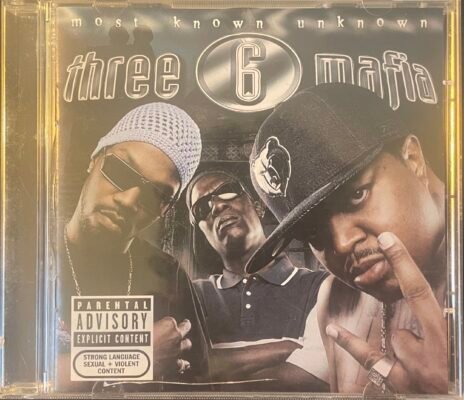Once you understand the story of how Memphis Rap started, one question naturally follows: Why did it end?
To many fans — myself included — it felt like Memphis Rap vanished just as fast as it exploded. Between 1993 and 1997, the scene produced over 300 different underground tapes. Artists like Shawty Pimp, Lil Grimm, and DJ Sound were pushing boundaries and building a legacy. Then, almost suddenly, many of them disappeared. The raw, eerie Memphis sound that once defined a whole era began to fade. So, what happened?
The answer is simpler than the origin story — and unfortunately, a little more disappointing.
The Rise of Southern Rap and Industry Takeover
By the mid-to-late ’90s, Southern rap was booming. Cities like New Orleans and Atlanta were stepping into the spotlight — and the music industry noticed. Around 1996, Hip-Hop mogul Master P took a page out of Memphis’s book. Inspired by the way Memphis artists consistently dropped tapes, he adopted that same rapid-fire release strategy with his label No Limit Records. Based in New Orleans, No Limit dropped a jaw-dropping 23 albums in 1998 alone, selling over 15 million copies total.
Meanwhile, Cash Money Records — home to Juvenile, B.G., and a young Lil Wayne — was right behind them.
Once the South started making serious money in Hip-Hop, the major labels swooped in. They wanted a piece of this “underground goldmine”. Labels started signing many Southern artists to major deals, which effectively ended their underground careers. Once you’re under a label, the rules change. You can’t drop tapes whenever you want. You’re managed, controlled, and rebranded for the mainstream.
Many artists adapted — but in doing so, they lost the gritty, independent spirit that made Memphis Rap so iconic.
1999: The Turning Point
By 1999, it was clear: Atlanta had officially surpassed Memphis as the epicenter of Southern rap.
Ludacris and Lil Jon had just dropped their debut crunk albums — a style of music Memphis had invented, was now repackaged and rebranded as Atlanta’s signature sound. T.I. had just signed to Arista Records. Outkast was now a global phenomenon, and was bigger than Eightball & MJG. Goodie Mob & The Dungeon Family had also been gaining serious momentum. And Pastor Troy from Atlanta had just dropped his debut album. All of this happened in the year 1999.
Even though Memphis laid the foundation for much of Southern rap’s sound, it was now being left behind.
At this point, only a handful of Memphis artists were known majorly outside of the South: Three 6 Mafia, Eightball & MJG, and Tela. Everyone else seemed to be either fading into obscurity or trying to keep up with the rapidly evolving sound of the industry.
The 2000s: A Decade of Chasing Trends

As the 2000s rolled in, Memphis Rap shifted. Gone were the days of home-dubbed tapes and hand-drawn promo flyers. Now, rappers were chasing radio hits. Even underground legends like DJ Squeeky seemed to be aiming for the mainstream appeal and chasing the Atlanta Crunk sound.
That’s not to say good music stopped coming out of Memphis — far from it. Playa Fly, Kingpin Skinny Pimp, & MC Mack, all kept releasing quality material well into the 2000s. But by the time 2004 came around, that uniqueness Memphis once had was very hard to find.
Memphis artists started sounding like everyone else in the South. You could hear the influence of Atlanta, New Orleans, and even Houston in their beats and flows. Someone like La Chat, who once had a gritty, distinct style, now sounded like she had to water it down to stay relevant. Gangsta Boo’s solo album in 2003 was a major flop. DJ Squeeky faded into obscurity. And underground producers like DJ Sound, Shawty Pimp, & Lil Grimm had all long been forgotten about.
The Inevitable Change
Change is natural — especially in Hip-Hop. Every region, every genre evolves. But the golden era of Memphis Rap from 1993–1998 was something special. It was unapologetically raw, eerie, lo-fi, and local. It didn’t try to sound like New York. It didn’t want mainstream approval. It was underground in the purest form.
From the haunting production to the aggressive flows, the chopped-up soul samples to the gritty white paper cassette labels — Memphis Rap was a world of its own.
And while the mainstream took pieces of Memphis and ran with it, there’s never been anything else like it.

